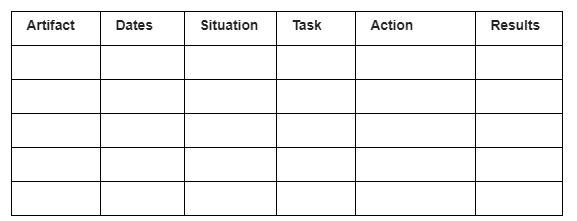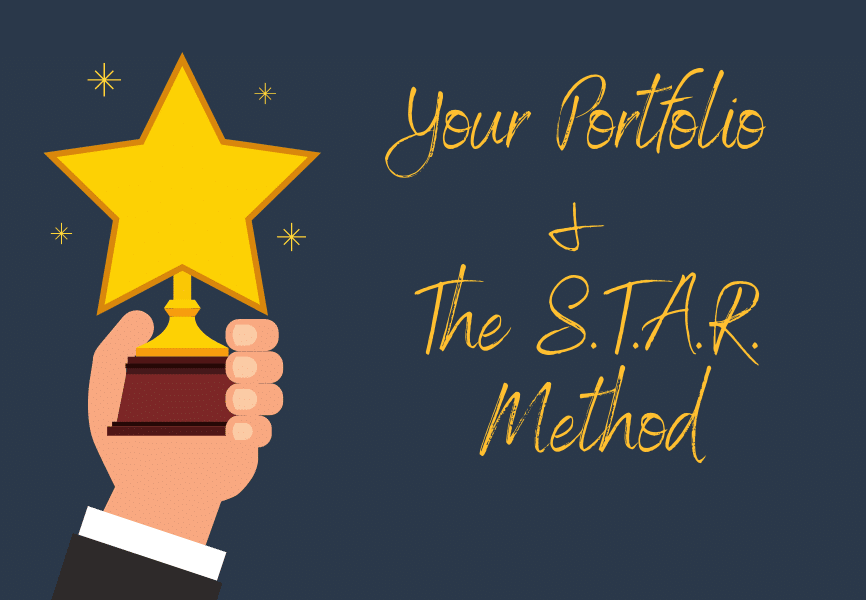If you’re working on the portfolio for WRD, you’re likely reflecting on the work you’ve completed. Students sometimes struggle to talk about their experience completing a class or a specific project, likely because learning may not happen in discrete instances.
The STAR method is an approach for effectively describing experiences working on projects for work or school that can be used in the context of portfolios, job applications, interviews, CVs, or resumes. As described by the Career Center at University of Leeds, “It helps employers and course providers evaluate the skills, qualities and experiences you have that would help you fit with the job, course, company or institution.”
Let’s break down the STAR method: the pneumonic stands for Situation, Task, Action, and Result.. First, Situation explains the context of the work, i.e., “while completing my degree” or “while working at the firm”. Describe the course, client, or situation in this section. Other details might be relevant for the context, but it’s up to you to decide. Some examples of additional potentially relevant details might be “while raising a family” or “during the Covid-19 Pandemic”.
Next, Task is meant to explain the intended purpose of your work. Take this section to explain what you did in your experience and how your success was measured and achieved. If you worked in a group, mention that while also paying close attention to your individual role in the project.
Action, the dominant component of your example, should describe why you did what you did, how you did it, and which skills you used. Use this section to name specific steps you took towards completion. While the “why” will likely describe the goals of the company or institution, use the “why” to emphasize the choices you made allowing for your success in the process. Skills are also important, and likely will follow from the decisions you made about how to approach the project. Action should take up at least half of your explanation, since it includes the most comprehensive description of the experience.
Last, Results. If you have a way to describe the impact you had on your team, company, or institution throughout your project, describe it here. For example, when I was describing my 3 years experience working at Jamba Juice in High School, a place where I never was or tried to be promoted, I explained that I “established trust with my managers that allowed me to recommend new hires that went on to become valuable additions to our team.”
Some other narrative components you may consider in your reflection include the Rhetor (the primary rhetor(s) or composer(s) of the project), the Exigency (the motivation and purpose of the project), and the Audience (primary, secondary, tertiary). The table below is useful for practicing and employing the STAR method.

Using what you developed in the table, try writing out a narrative of one of your samples. Situation and Task may be covered in a few sentences. Action should be the bulk of your contextual framing. Keep in mind the context in which your audience will be reading. Draw attention to the most important information so they do not have to spend too much time reading.
The STAR method is versatile and can be applied during in-person interviews, and writing it out will help you practice the flow of your explanation paragraphs. With enough repetition, the STAR method can become your automated response when faced with the challenge of describing your previous experiences for hiring scenarios.
